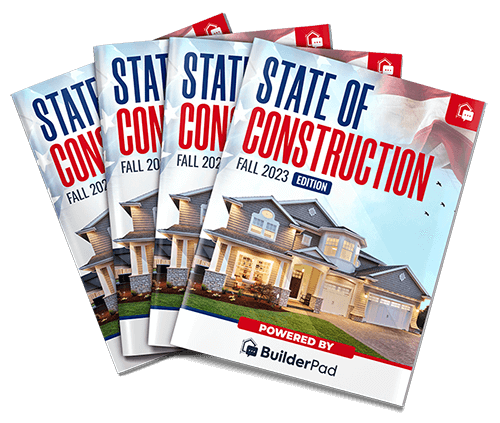The construction industry, a sector characterized by the complex interplay of creativity and functionality, often hinges on a critical phase – design approval.
This stage is a crucial determinant of a project’s timeline, budget, and ultimate success.
However, it can also be a source of significant delay and frustration for construction professionals and clients alike.
In this article, we’ll delve into the intricacies of obtaining design approvals and explore strategies to expedite this process.
Understanding the Approval Bottleneck

Before addressing solutions, it’s important to comprehend the roots of the problem. Design approval can become a bottleneck due to various factors:
- Complexity of design: Modern construction projects often involve intricate designs that can be difficult for clients to visualize and understand fully before approval. The complexity leads to more questions and required clarifications.
- Decision-making hierarchy: In many cases, multiple stakeholders like architects, engineers, contractors and end users are involved, each with their own opinions and interests, leading to a lengthy consensus-building process. With so many cooks in the kitchen, aligning perspectives is challenging.
- Change requests: Clients may request changes after reviewing a design, leading to additional rounds of revisions and approvals. The ripple effects of these changes can be far reaching if not managed properly.
- Regulatory compliance: Ensuring that designs meet all local codes and regulations can require adjustments and re-submissions. Interpretations of these regulations can vary as well, further complicating matters.
- Communication barriers: Ineffective communication channels can lead to misunderstandings and delays in feedback. Email threads with unclear summaries of decisions lead to confusion.
Streamlining the Process

To mitigate these issues, construction firms can adopt several approaches:
1. Leverage Technology
Utilizing 3D modeling software and virtual reality can help clients better understand and visualize the proposed designs fully.
These tools can turn abstract blueprints into immersive experiences, clarifying aspects that might otherwise lead to confusion and delay. The intuitiveness of these technologies enhances comprehension.
2. Establish Clear Timelines
Setting and agreeing on specific timelines for feedback and approvals can help keep the process on track.
BuilderPad’s scheduling tools allow visualize and share all the timelines to keep everyone updated on what is holding your project back.

This approach involves creating a clear schedule that outlines when inputs are needed and emphasizing the implications of missed deadlines. Proactive timeline management is key.
3. Improve Communication
Developing a structured communication strategy that defines how and when updates are given and feedback is received can enhance efficiency.
Utilizing collaboration platforms where all stakeholders can view and comment on designs simultaneously may reduce the back-and-forth typically associated with the approval process. Centralizing communication prevents misalignment. There is technology available to help you streamline communication.
4. Engage in Pre-Design Consultation
Involve clients early in the conceptual stage to align visions and expectations.
This early engagement can minimize significant changes later in the process, as clients feel a sense of ownership and understanding of the design from the onset. Early collaboration leads to shared vision.
5. Manage Change Orders Effectively
When changes are requested, a streamlined process for handling these orders can prevent major delays.
Quickly integrating feedback and efficiently re-circulating designs for approval is key. A clear change order process minimizes disruption.
6. Train Clients on Process and Expectations
Educating clients on the design process, the importance of timely approvals, and the potential cost and timeline implications of delays can foster a more collaborative environment.
Setting clear expectations improves partnerships.
7. Documentation and Record Keeping
Meticulous documentation of all interactions, feedback, and revisions can aid in maintaining clarity and accountability throughout the approval process
BuilderPad provides all-in-one dashboard where you can store and share documents, interactions and feedback.

Complete records reduce ambiguity.
8. Navigate Regulatory Waters with Expertise
Having a team that is well-versed in local regulations can streamline the approval process with planning departments and other regulatory bodies, reducing the likelihood of compliance-related setbacks.
Regulatory fluency prevents hang ups.
Conclusion
Waiting for clients to approve designs can be a significant bottleneck in the construction process, but with proactive measures and the integration of modern technology, the path to approval can be considerably smoothed.
Construction firms that successfully implement strategies to streamline client design approvals can expect not only shorter project timelines but also improved client satisfaction and industry reputation.
Ultimately, in a field where time is synonymous with money, efficiency in design approval is not just a matter of convenience but a critical component of competitive advantage and project success.
Key takeaways include:
- Leverage 3D modeling and VR to aid client visualization
- Create and adhere to clear timelines for approvals
- Improve communication through collaboration platforms
- Involve clients early on to align expectations
- Have a streamlined change order process
- Set client expectations on process and timeliness
- Maintain meticulous documentation for accountability
- Ensure regulatory expertise to avoid compliance issues
With proactive planning, transparent communication, and strategic use of technology, construction firms can transform design approvals from a bottleneck into a driver of shared success with clients.
Streamlining this critical stage leads to competitive and operational advantages that impact bottom lines and reputations positively.







